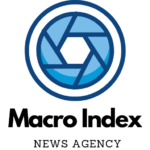
Accounts for retirement are among the most advantageous tools available for saving and investing for retirement. 401(k)s are the most prevalent form of retirement account, primarily because employers offer them. It is not, however, the only retirement account.
IRAs may also play a substantial function in retirement savings. Although 401(k)s receive the most attention, IRAs can be just as valuable, and in some cases even more so.
Choices are appealing to me.
There are advantages and disadvantages to virtually every aspect of finance. One disadvantage of a 401(k) is the restricted investment options. In a 401(k) plan, you typically have the option of investing in your company’s stock (if it’s a public company), market cap-based index funds, target-date funds, and international funds.
To be fair, you can build a diversified retirement portfolio with these options, but they are nonetheless restrictive. Those select options may not be sufficient for investors desiring greater freedom to customize their stocks to their objectives and preferences.
If you are a devotee of Apple but do not work for the company, the only way to invest in it through your 401(k) is likely through a large-cap index fund. If you are not employed by Alibaba and wish to invest in the company, your only option would likely be an international index fund.

IRAs function similarly to brokerage accounts; you can invest in any company or exchange-traded fund (ETF) you choose. Those Apple and Alibaba shares are easily accessible via a few clicks or touches.
Don’t ignore how fees accumulate.
When you have greater control over your investments, you also have greater control over your fees. A 401(k) typically includes four categories of fees:
Administrative: Used for accounting, recordkeeping, and other administrative duties required for account operation and maintenance.
Investment: Cost associated with your particular investments, such as ETFs.
Service: Services that are elective, such as a 401(k) loan.
Advisor: Fees may apply if you elect to use your provider’s advisory services, if they are available.
With an IRA, you are solely responsible for the expense ratios of any ETF investments.

Suppose a person invests $500 per month in an IRA and 401(k) in a large-cap fund (such as the S&P 500). If they have 2% in 401(k) fees and the large-cap fund has an expense ratio of 0.03%, their investments, assuming 10% annual returns over 25 years, would look roughly as follows.
| ANNUAL FEES | ENDING VALUE | AMOUNT PAID IN FEES |
|---|---|---|
| 2% | $438,600 | $151,400 |
| 0.03% | $587,400 | $2,600 |
2% is a modest percentage. However, it is expensive in reality.
More accommodating withdrawal terms can pay off
You want to avoid early withdrawals from your retirement accounts if at all possible, but life happens. There are some exceptions that apply to both 401(k)s and IRAs, such as disability, medical expenses, and certain military personnel. Both plans impose 10% early withdrawal fees, but there are some shared exceptions.
With an IRA, the number (and variety) of exceptions to this early withdrawal penalty is significantly greater. Starting with the ability to withdraw funds for qualified education expenses, such as tuition and fees, books, and other required student activity fees for you, your spouse, or your child.
Additionally, eligible first-time buyers can withdraw up to $10,000 from their IRA to use toward the purchase of a property.

The sheer number of exceptions to the 10% early withdrawal penalty provides IRA proprietors with more flexibility in the event that they must make an early withdrawal.
Choosing the best IRA for you
There are two primary IRA types: Roth and traditional. Contributions to a Roth IRA are made with after-tax dollars, and withdrawals in retirement are tax-free. There is a possibility that you can deduct your contributions from your taxable income if you have a traditional IRA.
Choosing between the two is typically determined by your current tax bracket versus your projected tax bracket in retirement.
If your current tax bracket is likely to be lower than it will be in retirement, it makes sense to choose a Roth IRA so you can pay taxes at the lower rate now. If you are in your peak earning years or earn more than the Roth IRA income limit, it makes sense to choose a traditional IRA so you can defer taxation until you are in a lower tax bracket in retirement.
For the 2023 tax year, the maximum contribution to an IRA (both Roth and traditional) is $6,500 ($7,500 if you are 50 or older). This relatively low limit indicates that an IRA won’t likely be your primary source of retirement income, but it can be a great supplement that will undoubtedly come in useful.
